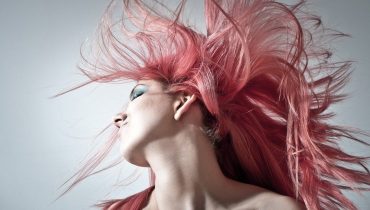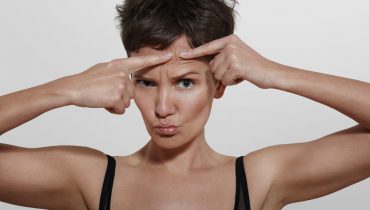While not dangerous for your health, dandruff can be a menace. Apart from the itching and flakes all over your head and clothes, it can also be hard to treat. This is because dandruff is caused and aggravated by many things and factors. It can be an allergic reaction, the kind of water you are using or even the hair products you have in your bathroom.
So you may be focusing on the wrong root cause.
One common factor behind dandruff that many people don’t consider is hair drying. If you hair dry your hair often and no shampoo or conditioner is getting rid of the dandruff, your hair dryer could be the culprit.
How hair drying causes/aggravates dandruff
You already know that a hair dryer works by blowing heat on your hair. When that heat reaches your scalp, it causes some drying. The severity of drying will depend on the length and amount of heat exposure.
A dry scalp is highly susceptible to dandruff especially in people who are already more vulnerable to the condition (e.g. those with a sensitive scalp or dry skin).
So if you expose your scalp to too much heat for too long, the heat strips out your hair’s natural moisture and oils. It destroys your scalp’s barrier against dandruff. With time, you’ll notice scaly flakes falling off your hair especially when you scratch your head.
Note that sometimes the condition you are experiencing is not dandruff but just flaky skin cells coming off your scalp. But both conditions can be caused and aggravated by hair drying.
- Read also: Can a hair dryer kill lice
Other risks of hair drying
If you hair dry excessively at high heat, you may also experience itching on your dry scalp. If you have a sensitive or allergic scalp the itching will be worse because there is no protective barrier.
Another sign that your hair dryer is causing damage is scalp redness. This is a symptom commonly associated with dandruff. It’s usually caused by inflammation which is, again, as a result of your natural protective barrier being stripped off.
As the heat reduces the amount of hydration of your scalp, it dries out your hair too. Your hair loses its soft supple feel. It gets dull, feels dry and looks scraggly. It also becomes more vulnerable to splitting and breaking as it loses its strength. If you hair was already starting to thin, it could get worse.
How to hair dry safely
I’m not saying that you stop hair drying completely. It’s still a great way to get your hair in shape and smoothen out frizz. You just need to be more careful when doing it. Here are some helpful tips.
1. Buy the right hair dryer
A hair dryer is one of those things that you should spend a bit more money on. It is worth it to get a more expensive hair dryer that not only works better but offers more protection for your hair and scalp.
Quality hair dryers (e.g. Parlux or ghd Air) come with tons of features that result in better looking and healthier hair. These include heat and speed settings, infrared heat and ionic technology.
Ionic dryers for instance have technology to dry out the moisture faster thus reducing the amount of time your hair is exposed to heat.
2. Use the lowest heat setting
The hotter the hair dryer is the more damage it will do to your hair and scalp. Reducing the heat reduces the level of damage.
Most hair dryers come with several heat settings that allow you to control the temperature. Always use the lowest heat setting.
3. Use the right hair drying technique
One common mistake is to bring the hair dryer too close to your head. This creates more heat exposure especially on your scalp. Position the hair dryer as far away as possible while still managing to style your hair. You should especially avoid pointing the hair dryer directly at your hair roots and scalp as that is where the worst of the damage occurs.
Also be careful not to focus the heat too much on certain areas. Instead, dry your hair evenly. Too much heat in a single spot will cause more damage.
It’s also recommended that you let your hair air dry a bit before using a hair dryer. You’ll spend less time drying out the moisture which means less heat exposure.
4. Use heat protection
Never dry your hair without using a heat protectant. It can be either a spray or cream. While it won’t completely stop damage, it will prevent most of it.
Don’t forget to also supplement your hair care routine with the right conditioners and shampoos that keep your hair and scalp hydrated and healthy.


